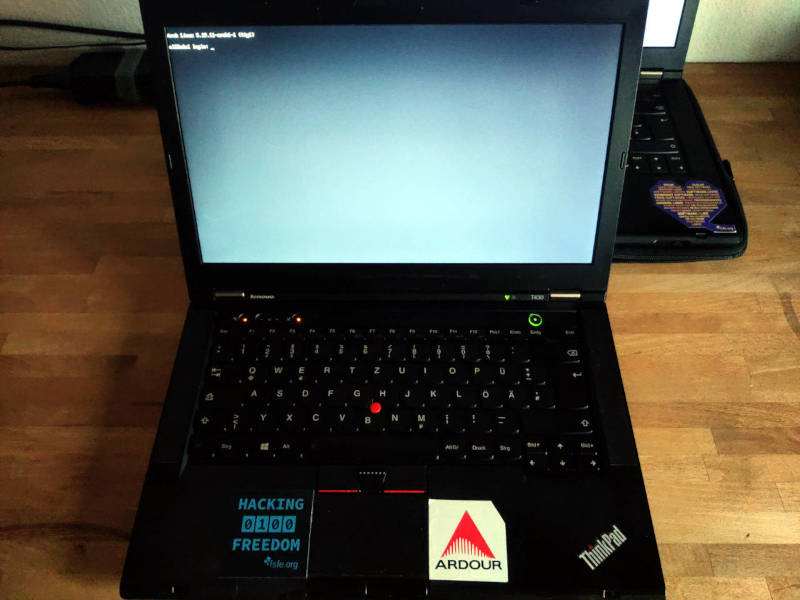Record arming for the album
I’m about to begin with recording sessions for the planned album Dozen lections for educationists. Since my last post I’ve focussed on writing the Professional audio guide while setting up my environment on a new notebook. The background is that I switched to using just one notebook instead of a dedicated device for pro audio work to release some hardware and be more portable.
Good old ThinkPads
For this reason, I had to say goodbye to the mature setup on my beloved T430 ThinkPad, which is perfectly supported in Arch Linux1. While I was finishing my degree I even bought another T430 when I accidentally spilled water on it. However, about a week later it booted just fine again. This showed me how robust this device is and I started looking for and evaluating a desired task for my new spare notebook. (This process is still ongoing.)

Projects using the T430 ThinkPad as hardware
Modding fun
Another reason to “fall in love” with a T430 is its modification ability. The Definite T430 Modding Guide describes a lot—if not all—of the adjusting screws you can turn to improve the default configuration. To me one of the most crucial mods is BIOS flashing using 1vyrain. This allows to me disable Intel ME2 in the BIOS setup, removes the WWAN and WLAN whitelist, and unlocks AES-NI3 capabilities. With a spare notebook at hand I was brave enough to try flashing and it worked great. I soon upgraded the wireless NIC to a Wi-Fi 54 capable device and upgraded the display.
I have been very happy with my modded T430 and the Arch Linux installation, which has matured over time. However, 12 years after initial production and release of this notebook model there are too many shortcomings related to the hardware design and standards at that time. Now it’s time to try modern hardware and have fun learning its improvements and coping with any disadvantages.
A new arrangement
While working on the documentation of the Arch Linux installation on my new notebook, I realized that it may be time to reflect and adapt details of my preferred configurations to newer concepts. One of this adaptions is a Sound server setup based on PipeWire only instead of dealing with also with a JACK server for pro audio. The reason is simplification. From my experience PipeWire is now mature enough to substitute JACK at all and as its development seems to be stalled, it’s reasonable to ommit JACK.
Zero barriers
In addition to using PipeWire, I decided to rely on CC0 or public domain licensed samples for drums, piano and other virtual instruments. This way I am absolutely allowed to share every single asset and the full history of a project along with the resulting music by working on a song as if it was a code and commit the changes via Forgejo, a self-hosted software forge. By this, you are able to not only use the same tools for creating music but also follow the way I produced it or even fork a note, a sound, a melody, a track, etc. and eventually become a FLOSS musician by yourself.
The autumn has always been a season of rearranging and setting sails for me. This year I’d like to use this energy to finally start music production over again.
-
T series comparison table in the ArchWiki ↩︎
-
AES instruction set in the Wikipedia ↩︎

